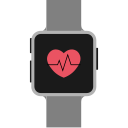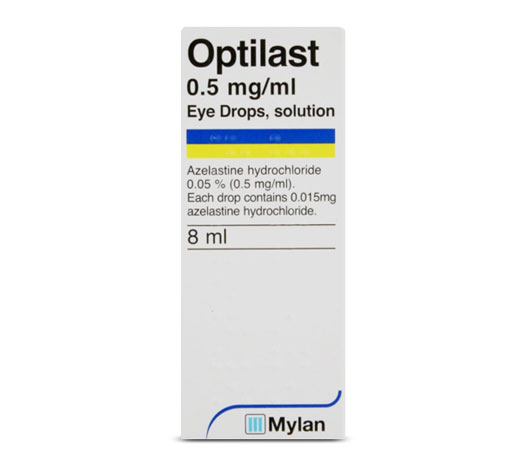Optilast Eye Drops

Optilast contains the active substance azelastine hydrochloride, which belongs to a group of medicines called antiallergics (antihistamines).

Like any other prescription medication you must consult a doctor before using it. PrivateDoc offers a confidential free consultation service that may result in you receiving a prescription for Optilast Eye Drops if it is deemed appropriate and can prescribed safely.

Complete a 100% free and secure consultation to explore your treatment options. How our online prescription consultation works.
What is Optilast
Optilast contains the active substance azelastine hydrochloride, which belongs to a group of medicines called antiallergics (antihistamines).
Antihistamines work by preventing the effects of substances such as histamine that the body produces as part of an allergic reaction. Azelastine has been shown to reduce inflammation of the eye.
Optilast can be used to treat and prevent eye disorders which you get with hayfever (seasonal allergic conjunctivitis) in adults and children aged 4 years and above.
Optilast can be used for eye disorders caused by an allergy to substances such as house dust mites or animal hair (perennial allergic conjunctivitis) in adults and children aged 12 years and above.
How much do Optilast Eye Drops cost?

Packs and prices
-
1 pack (8 mls) £24
Optilast Eye Drops 0.05% -
2 pack (16 mls) £59.99
Optilast Eye Drops 0.05% -
3 pack (24 mls) £79.99
Optilast Eye Drops 0.05%
How to use Optilast
The recommended dose is:
Eye disorders caused by hayfever (seasonal allergic conjunctivitis)
- Use in adults and children aged 4 years and above
- The usual dose is one drop in each eye in the morning and evening.
If you anticipate contact with pollen, the usual dose of Optilast may be taken as a preventive measure before going outside.
Allergy symptoms can occur at specific times of the year and be caused by allergy to pollen from grass or trees (hayfever), or they can occur all year round and be caused by allergy to animals, house-dust mites or moulds to name some of the most common.
Eye disorders caused by an allergy (non-seasonal (perennial) allergic conjunctivitis)
- Use in adults and children aged 12 years and above
- The usual dose is one drop in each eye in the morning and evening.
If your symptoms are severe, your doctor may increase your dose to one drop in each eye, up to four times a day.
Relief of symptoms of allergic conjunctivitis should be noticed after 15-30 minutes.
Get Started How much does Optilast Eye Drops cost?Putting in your Optilast eye drops
To help you put in your eye drops correctly, you may find it useful to sit in front of a mirror so you can see what you are doing for the first few times.
- Wash your hands.
- Gently wipe around your eyes with a tissues to remove any moisture.
- Unscrew the top of the bottle and check that the dropper is clean.
- Gently pull your lower eye lid down
- Carefully place the drop inside the middle of your lower eyelid. Take care not to let the dropper touch your eye.
- Release your lower eye lid and gently press on the inner corner of your eye against the bridge of your nose. Keeping your finger pressed against your nose, slowly blink your eyes a few times to spread the drop across the surface of your eye.
- Blot away any excess medicine with a tissue.
- Repeat this for your other eye.
How long should Optilast be used for?
If possible, you should use Optilast regularly until your symptoms have disappeared.
Do not take Optilast for more than 6 weeks.
Get Started How much does Optilast Eye Drops cost?Possible Side Effects
Like all medicines this medicine can cause side effects, although noteverybody gets them.
These effects include:
- Common (may affect up to 1 in 10 people): Slight irritation (burning, itching, watering) in the eyes after putting in Optilast. This should not last long.
- Uncommon (may affect up to 1 in 100 people): A bitter taste in your mouth. This should quickly disappear especially if you have a soft drink.
- Very rare (may affect up to 1 in 10,000 people): An allergic reaction (such as rash and itching).
Meet our team
PrivateDoc is happy to introduce you to some of our leading UK licensed clinicians.







